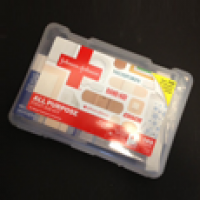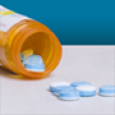Answering Mother Nature

Check out our Weather or Not, 2018 Hurricane Season is Coming blog for the update information.
I’m a weather nerd. I’ve lived through hurricanes, blizzards, tornados, floods and other severe storms. I’ve only had to deal with minor earthquakes, which makes me happy. I am a trained weather-spotter and am hoping to go tornado-chasing next year. I am also a FEMA-certified livestock disaster manager. I have weather apps on the phone that drive my cube mates crazy. I’d like to think I’m prepared for any event Mother Nature can hand me.
And then I look at Typhoon Haiyan in 2013 in the Philippines or at Super Storm Sandy in 2012 and realize no one can ever prepare for a disaster of that magnitude; the best you can do is lessen your risk and have a plan and supplies to survive the immediate aftermath.
There are so many risks that happen after a disaster hits: fires and explosions; falls; drowning; hypothermia or heatstroke; disease. But even simple, every day incidents can cause localized disaster, like a downed power line, strong winds and sudden and heavy rainfall. Being prepared isn’t an occasional event – it should be something we do and review so we are ready to protect our kids, our families and our communities.
Starting your disaster planning today can be as easy as 1-2-3.
Have a Plan
- Fire – see our Fire Escape Plan and always have two exits.
- Flood – visit ready.gov for flood planning.
- Winter Weather – be prepared for winter disasters with the CDC’s Winter Weather page and know how to prevent carbon monoxide poisoning.
- Evacuation – know your route and know the appropriate local evacuation centers which you can best find through your state’s Emergency Management Agency.
Make Sure Your Plan Includes Everyone
- Your kids – keeping your kids healthy and calm is paramount. If time permits, have a fun bag packed to go with medicines and necessities. Let your kids help pack the fun bag in advance.
- Your pets – since Hurricane Katrina hit, we are looking at pets in a disaster in a much different light. Now, the rule of thumb is you should not leave pets behind – plan for their evacuation as well. Keeping their four-footed friend safe can keep your kids calmer, too. Visit ready.gov for more information about caring for pets during a disaster.
- Seniors in your household – like young children, any seniors in your house need extra consideration in preparing for a disaster. Before it’s time to evacuate, be sure you are able to quickly locate necessary medicine and supplies, and be able to arrange special transportation if necessary. See ready.gov’s seniors web page for planning tips and advice.
- Important records and electronics – I keep a disaster pack in a water-tight bag in a safe spot. It includes important information such as my passport, banking and insurance information, and other personal records that I may need if I can’t get back into my house. One grab and it goes into my backpack if I need to move quickly. If you have time, don’t forget chargers for phones, tablets and laptops.
- Livestock – if you are in a rural area and have livestock, dealing with inclement weather is second nature. However, many of us aren’t ready for large-scale disaster impacts. The 2013 spring tornados In Oklahoma taught us that sad lesson. Here is a good outline to ready your farm for a disaster from the Humane Society and for horse owners, here is a great page of tips.
Build a Kit
- Build a disaster supply kit that has enough supplies for 72 hours for all members of your family. Don’t forget to take care of your needs as well. One time before a hurricane, I had my barn ready, walked into my house and realized I didn’t even have anything prepared for myself. See ready.gov for details on what should be in your kit.
Literally every state in the United States can and will have a natural disaster at some point. It’s not a “if” question, it’s a “when” fact. Being ready will never prevent the disaster, but if it should happen, having a plan and kit will help you and your family survive.




